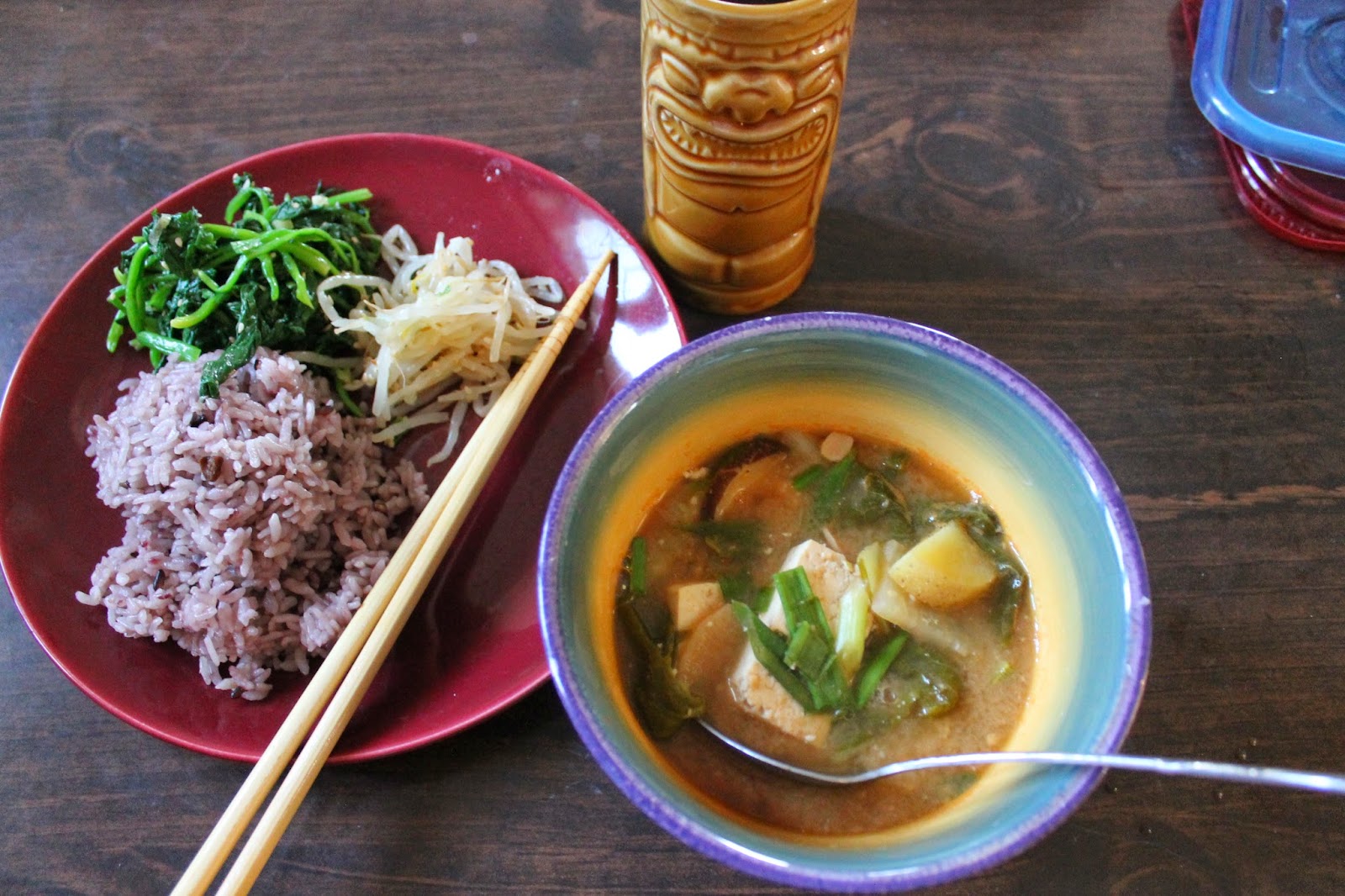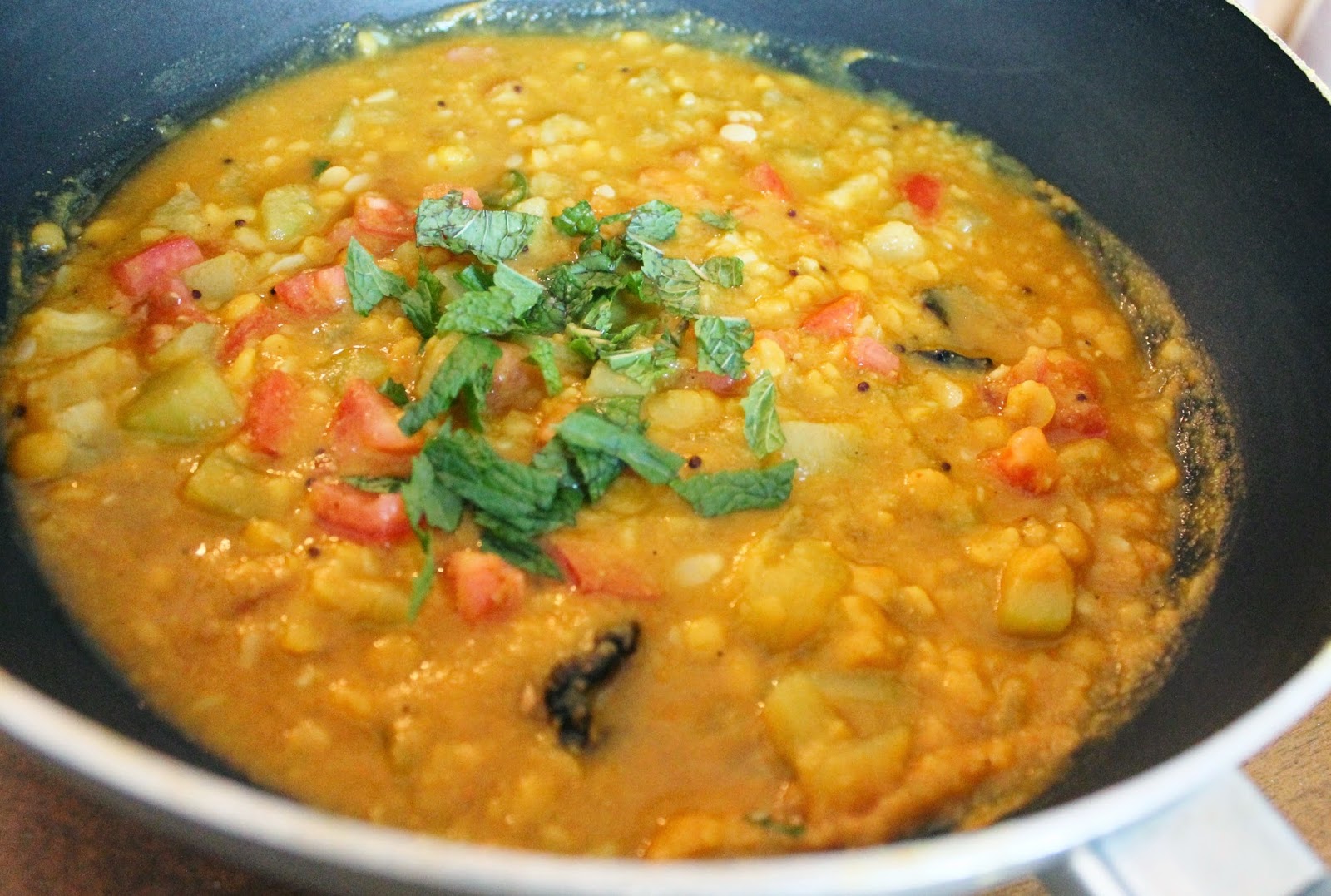Today is a Sunday making it the perfect day to make Metemgee, a hearty Creole stew from Guyana, eaten on Sundays with family. My friend Dillon's family is from Guyana and his mom Elizabeth was kind enough to teach me how to make it this afternoon. Metemgee is known to be a satisfying and nutritious meal containing starchy root vegetables rich in a variety of vitamins and minerals. Elizabeth also learned how to make this from her mother, just like she has learned to cook most Guyanese dishes. Guyanese cuisine reflects the many cultural influences that have been integrated into the country over time. Although it is part of mainland South America, it is also considered part of the Caribbean. Elizabeth tells me that it was colonized by the British, only gaining independence in the 70's. African, Indian, Latin American, Chinese and indigenous flavors are present in different Guyanese dishes. It mostly features tropical ingredients but I'm surprised to hear that dairy is heavily used, especially in pastries. Due to the immigration of Indians to Guyana, Elizabeth knows quite a bit about different regional Indian cuisines, revealing that she was even a saree model back home. She misses Guyana a great deal but tells me that it has become corrupt since leaving. She hasn't been back since she married Dillon's father. "I think I'd like to go back once someday."
Elizabeth explained to me how Metemgee originated as an African slave dish made from root vegetables which they call provisions. It starts with a base of coconut milk and contains cassava (yuca), sweet potatoes, yams, yellow yams, plantains, eddo (taro), and a variety of gourd found in the West Indies. She tells me that the recipe can be made with other vegetables like okra or tomatoes but she likes to add spinach to hers. Dumplings called duff are also added, making the stew even more filling. Usually Metemgee contains salt fish or beef, but Elizabeth is a vegan and makes it without.

Elizabeth believes in eating as fresh as possible. "Everyone here puts their fruits and vegetables in the fridge so they last longer. I wasn't used to that coming here. The fresher it is, the better it tastes and the better it is for you." While she could very well use cans of coconut milk, she prefers to make it herself, the old-fashioned way. Although in Guyana, it would have been more labor intensive requiring that the coconut be grated by hand. Instead, Elizabeth cuts the flesh out of a coconut she has hacked open and blends it to a pulp in a blender along with water.
She lets me do the honors of squeezing the milk out of the pulp by placing it in a strainer over the pot of boiling water and buillon. Mostly squirting the milk all over the place and into my eye, I keep squeezing and squeezing until all of the milk is out into the pot and the pulp is fairly dry. But Elizabeth puts the pulp back into the blender with more water and surely enough we are able to squeeze out even more coconut milk. She describes all the other desserts you can make from the leftover pulp such as goja with added sugar and spices or pone made with cassava.
We add the garlic, onions, peppers and scallions to the pot, reserving the shallots for the end. Elizabeth tells me that you can season the dish however you want but she uses salt, pepper, thyme, and Mrs. Dash. After that, she adds all the root vegetables except for the plantains and yellow yams and simmers on medium heat, covered. While it cooks, I ask her about the other things she likes to cook. "I don't just make Guyanese food. I really like to experiment in the kitchen with all types of food. And I like to see how I can turn something vegan." I find out she's even writing her own cookbook. It's clear she is passionate about food and takes pride in her cooking knowledge.
I am told the key to preparing Metemgee making sure all the vegetables are evenly cooked despite their different densities and cooking times. While one can simply let the vegetable fall apart, Elizabeth likes to taste the individual vegetables. She takes out some pieces of taro and sweet potato that are getting too soft and sets them aside. Then she adds the plantains and yellow yam, covering the pot again. She checks in on the status of her vegetables every so often and finally adds some of vegetables she took out back in.
Finally, once the Metemgee is nice and thick, she adds in spinach, parsley and shallots and turns off the heat. While we were waiting for the vegetables in the Metemgee to cook through, we made the duff (dumplings) to be served with the stew.
We cut vegan butter (Earthbalance) into all purpose flour, baking powder, sugar, and nutmeg. Then we add warmed coconut milk until a dough formed. After rolling the dough into a dozen dumplings with the palms of our hands, Elizabeth shows me how she steams them in a shallow pot filled with a little bit of simmering water, covered. We watch the little dumplings rise and plump up, and in about 10 minutes, we remove them. Frying them with scallions once they are cooked is optional, but added crispiness and flavor is always a good thing. Now the dumplings are ready to be served over a few steaming ladles of Metemgee.

It's 7 pm and it's finally time to eat. My stomach grumbling during the whole cooking process, I cannot convey how much this meal hit the spot. I can feel myself getting fuller and fuller but I don't put my spoon down until it's all gone. It' delicious. The dish is extremely comforting and has a wonderful balance of flavors with sweetness coming from the plantains and spicy from the peppers. I will definitely try to make this at home some time but I know it will never compare to the Metemgee that Elizabeth has made. I had so much fun and learned so much cooking with her, and I hope I get invited back to their house to cook some more.
Metemgee
1 sweet potato
1 yam
1 yellow yam
1 half eddo (taro)
2 yucca root (cassava)
2 plantains
1/4 kabocha squash
1 coconut
3 oz spinach
1 onion, chopped
1 shallot, sliced
4 cloves garlic, finely chopped
3 scallions, thinly sliced
2-3 wiri wiri (cherry) peppers, finely chopped
1 cube vegetable buillon
Handful of parsley
1. Start by removing the skin of the root vegetables,
plantains and pumpkin. Cut each vegetable into similar 1.5 inch sized cubes and
soak in water to remove dirt.
2. In a large stock pot, boil 1 quart of water with a cube
of vegetable buillon
3. Cut coconut open and remove water. Using a knife, remove
the flesh and place in a blender with water. Blend until a completely mushy
meal forms. Place the coconut in a strainer and squeeze out the milk by hand
directly in to the pot of boiling water. Return the pulp to the blender with
more water and squeeze again to get even more milk.
4. Add the onions, garlic, scallions, and peppers to the pot
along with salt, pepper, thyme, and any other desired spices
5. Add all starchy vegetables except for the plantains,
yellow yam, and boil covered.
6. When the root vegetables are half way done, add in the
yellow yam and after a few minutes, add the plantains as well. Continue to boil
covered, checking on the softness of each vegetables. Remove any vegetables
that are becoming mushy to add back in later.
7. Let the stew thicken and once all vegetables are properly
cooked, add in the shallots, spinach, chopped parsley and stir.
8. Serve hot with dumplings
Dumplings
1/2 cup flour
2 slices of non-dairy butter such as Earthbalance
1 1/2 tsp baking powder
1 tsp sugar
Dash of nutmeg
1 cup warmed coconut milk
1. In a mixing bowl, cut the butter into the flour and then add all the dry ingredients. Mix together.
2. Add coconut milk little by little until a dough is formed. Kneed into a ball.
3. Roll dough into roughly a dozen balls
4. In a pot filled with shallow boiling water, steam the dumplings covered for 8-10 minutes or until they become plump. Remove and drain excess water in a colander and
5. Heat 1 tbsp oil in a skillet and fry dumpling with chopped scallions until slightly brown and crispy.




























